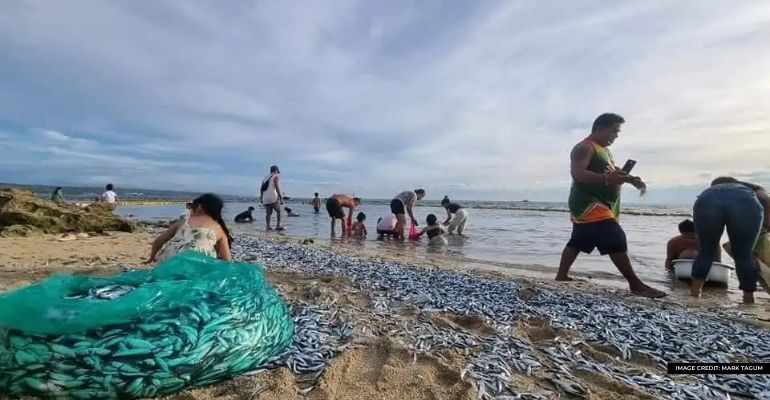A large group of sardines washed up on the shores of Sarangani was gathered by residents on Sunday, January 7.
Residents of Tinoto and visitors at the beach resort hurried to the shore, gathering substantial amounts of fish called lupoy using their hands and containers.
“This is a blessing from God. We are thankful to God for this,” Allan Gomez Dionaldo, a 28-year-old villager, told reporters in Filipino. He and his neighbors had collected at least five pails of tiny sardines each at the beach.
Local authorities assisted in supervising the gathering of juvenile pelagic sardines, referred to as lupoy by fishery experts, to ensure an equitable distribution among the community. Hundreds of villagers were able to take home around 20 to 30 kilograms each of these small sardines.
The mass beaching of a significant number of sardines occurs due to a combination of abrupt sea temperature shifts, alterations in wave direction, and a shortage of plankton, their primary food source.
Cirilo Aquadera Lagnason Jr. from the Department of Environment and Natural Resources-Soccsksargen (covering South Cotabato, Cotabato, Sultan Kudarat, Sarangani, and General Santos) clarified that the sardine beaching wasn’t necessarily linked to seismic activities underwater.
Zenaida A. Dangkalan, acting as the provincial fishery officer for Sarangani within the Bureau of Fisheries and Aquatic Resources (BFAR) in Region XII, evaluated the scenario.
“Tatlong reasons po ang nakikita natin bakit nangyari ito. Una, season kasi ng lupoy ngayon. Next, it may be merong humahabol na malalaking isda and sa shoreline sila napupunta kasi ‘yong mga malalaking isda hindi na kayang pumunta sa mababaw na portion. And pangatlo, naaakit sila sa liwanag galing sa beaches,” she explained.
Meanwhile, Maasim, the specific place where the scenario occurs is situated at the southernmost point of Mindanao, is a coastal municipality within Region XII in Sarangani.
Also Read: Cagayan de Oro to implement strict security for the Traslacion

Leave a Reply